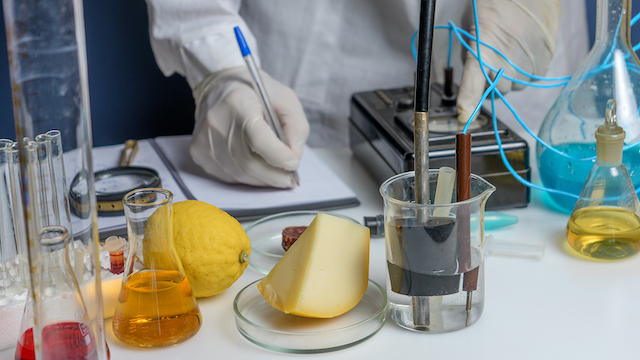Food safety testing is one of the crucial processes of the food industry. Ensuring that all food meets the quality standard without any harm involved. This crucial testing framework, temperature and humidity are important to preserving food integrity.
Temperature test chambers are crucial in ensuring food safety. By creating the same conditions helps us to increase food’s shelf life.
The temperature test chamber humidity chambers also have a similar role in this industry. These humidity chambers replicate environmental conditions to determine ideal conditions. Results in preventing spoilage, and ensuring product quality.
How Temperature and Humidity Test Chambers Safeguard Food Quality
Getting to know how these chambers are safe and ensure food safety.
1. Precision Control for Optimal Conditions
Temperature and humidity test chambers provide quite accurate control over environmental factors. Creating such conditions be it a freezing temperature for fragile food. Ensures that food remains in its original state, preserving freshness and quality.
2. Mitigating Spoilage Risks
Unusual fluctuations in temperature and humidity levels can cause food spoilage. These chambers help protect environments, preventing microbial attacks, and chemical reactions. This control extends the food’s shelf life and reduces waste.
3. Validation of Storage and Transport Conditions
Before products reach the buyers, they undergo the storage and transportation processes. Test chambers simulate these conditions, allowing the manufacturers to confirm packaging effectiveness.
Also, assess how products withstand different climates globally. This validation process ensures that food maintains its quality from production to consumption.
4. Compliance with Regulatory Standards
These test chambers help meet standards allowing companies to conduct tests. These test also helps to build trust and quality commitment.
5. Enhancing Product Development
For food manufacturers, these chambers are instrumental in research and development. Used in testing new formulations, packaging materials, and storage methods. Allowing for innovation while maintaining food quality and safety.
Applications of Temperature and Humidity Test Chambers in Upholding Food Industry Standards
Indeed these temperature and humidity test chamber has a compact role in the food industry. Chambers, such as the ChiuVention temperature and humidity chambers, are best to maintain food quality.
1. Ensuring Compliance with Stringent Regulations
Temperature and humidity test chambers, like the advanced ChiuVention Temperature solution. Also, provides the suitable and precise conditions necessary to simulate varying environments. This simulation allows important testing of food products, to meet quality standards.
2. Safeguarding Food Integrity Throughout the Supply Chain
From production to distribution, having optimal conditions is the basic paramount. Temperature test chambers replicate different climates, protecting fragile goods during transit and storage. This process is indispensable in preserving food quality and consumer safety.
3. Validating Shelf Life and Quality Parameters
Temperature chambers provide long testing to examine shelf life. Furthermore measuring how temperature and humidity fluctuations impact food quality. These tests used in optimizing packaging, storage, and transportation methods, increase longevity.
4. Elevating Industry Best Practices
By integrating temperature solutions, the food industry increases its quality assurance practices. Precise monitoring and control of temperature and humidity increase consistent product quality.
Maximizing Food Safety Assurance: The Role of Test Chambers
There is no doubt that ensuring food safety is a paramount concern in the food industry. Advancements and the latest technologies do play an integral part in this industry.
A. Why Temperature and Humidity Control Matter in Food Safety
Influencing the growth of microorganisms, enzymatic reactions, and chemical changes in food products. Test chambers maintain and check these conditions, and protect bacterial and mould formation. By controlling them we can extend the shelf life of food items, ensuring they remain safe.
B. The Functionality of Test Chambers in Ensuring Food Quality
Temperature and humidity test chambers help quality control experts analyze food-varying conditions. Different temperature and humidity levels help in the identification of food vulnerabilities.
C. Compliance with Industry Standards and Regulations
In this competitive industry attention to strict safety standards is important to compulsory. Temperature and humidity test chambers are used in compliance allowing thorough testing.
Companies Confirm their products according to industry benchmarks. knowing they have to meet or exceed safety requirements before reaching consumers.
D. Optimizing Food Safety Protocols Through Technology
Advancements in the test chamber technology help to get more precise results. Automated systems offer real-time monitoring and adjustments, and reduce human error and guarantee. These advancements boost the reliability and accuracy of food safety protocols.
Conclusion
In the realm of food safety testing, the role of temperature and humidity chambers is beneficial. So in this article, we discussed how these chambers serve as guardians of food quality.
Controlling environmental conditions to prevent spoilage, bacterial growth, and quality deterioration. Having these diverse conditions allows the industry to improve and confirm safety protocols.
This article is all about how these chambers used in the processes of food preservation to maintain is quality and integrity.








